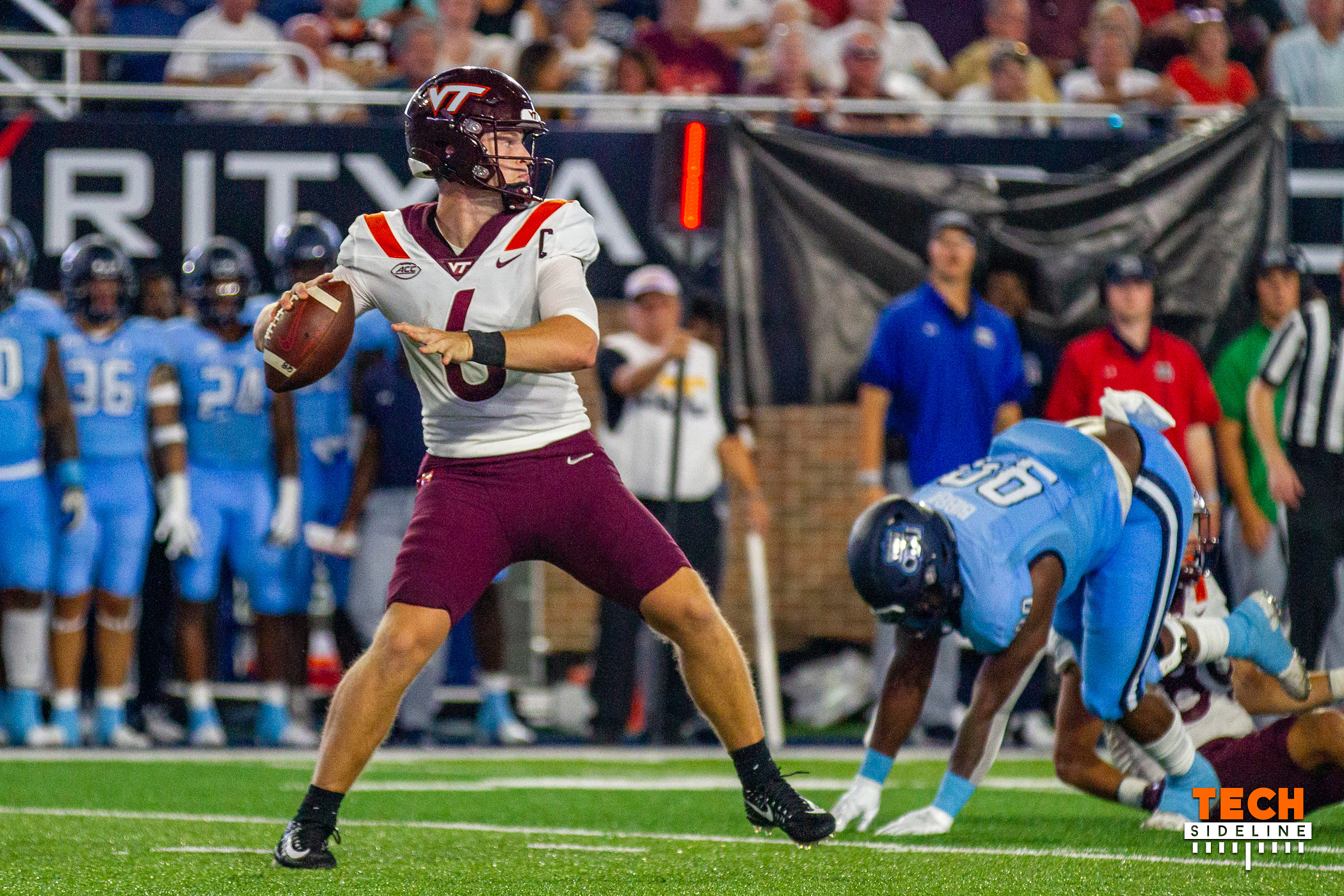
Let me start with this: I’m still on the Virginia Tech hype train (maybe leaning out the doorway, but on it nonetheless), and unless I see the 2001 Hurricanes or something similar when I look at the BC tape, I’m picking the Hokies to win.
Now that we’ve gotten all of my positivity out of the way, I’m going to get my peanut gallery on.
Sometimes you don’t know what you had until it’s gone. If the Hokies had done a little better with “predictable outcomes,” they probably leave Norfolk with a win. And if they had come in a little healthier, they might’ve eked out a nail-biter even with all the turnovers.
I think in all of the expected and visible worries we had, there hasn’t been much focus on the team’s issues with overall health. Despite a major (and well-publicized) effort to enhance the Hokies’ nutrition, training, and monitoring, a depleted VT roster showed up in Norfolk. The skill positions got the worst of it. Malachi Thomas was missed, and the wide receiver spots were unsettled…and that was before Kaleb Smith reportedly tweaked a hamstring that eventually sidelined him. Hamstring problems might be the most researched issue in sports science, and after years of frustration, coaches and trainers and sport docs are finally coming to some sort of grips with them.
During the Fuente years, Virginia Tech had Ben Hilgart running the S&C side. Starting around the last ODU meltdown, it became popular to bash Hilgart and his crew. They had some problems, for sure, but the perception got one-sided and the good things were missed. First, Hilgart had a good base, as he used the Tier System, which might be the best collegiate strength-training system around. Joe Kenn, who most of his peers would say is one of the top guys in the business, created it specifically to meet the demands of collegiate athletes, and he and the other coaches who use it have been improving the system for at least twenty years now. Most of the Hokies who came through it got better, and the team did a decent job of staying healthy—recall that in last year’s opener against UNC, the Hokies were ship-shape by comparison. Even a number of the critical injuries that dogged the Hokies under Fuente were things S&C can’t do much with, like chronic, pre-existing problems and blindside concussions.
Hilgart also had some feathers in his cap. He helped turn an unknown JUCO linebacker into a guy who set the 40-yard dash record for defensive ends at the NFL Combine, helped turn high school QB Caleb Farley into a first-round corner, and helped turn Kansas second-stringer Khalil Herbert into an NFL-quality back. Sure, there were guys who didn’t do well under Hilgart. Of those guys, Tre Turner got most of the attention, but he hasn’t seemed to do well on anything, as expectations of him taking off physically during combine prep were squashed. In retrospect, maybe issues with S&C under Fuente were more about players’ respective ceilings (and maybe the goofy crap Fuente dug, like Colorado drills, which must’ve been a pain to program S&C around.)
I don’t think the current training/nutrition group at VT is a bad one. I do think there’s some bad luck thrown
…




